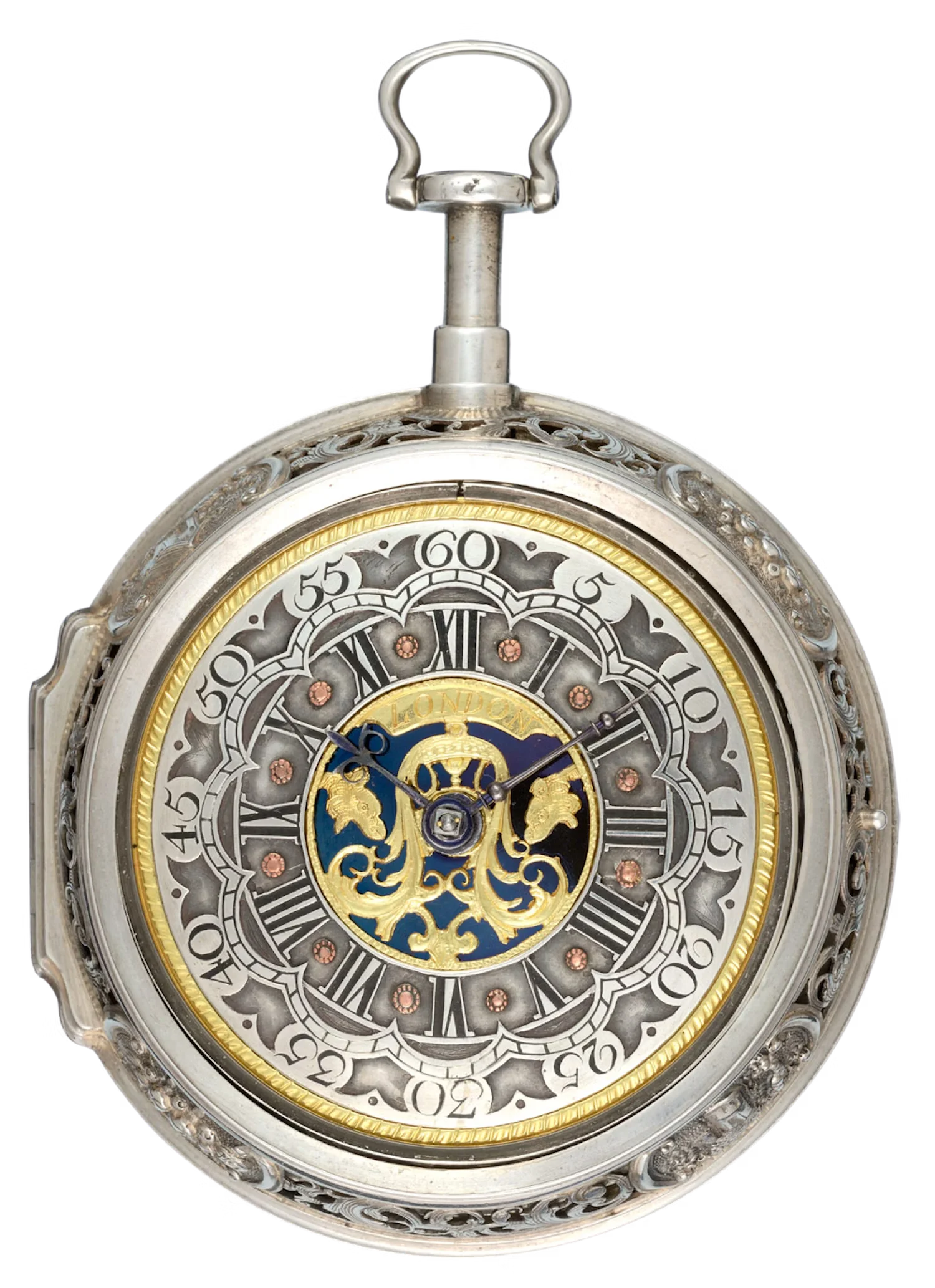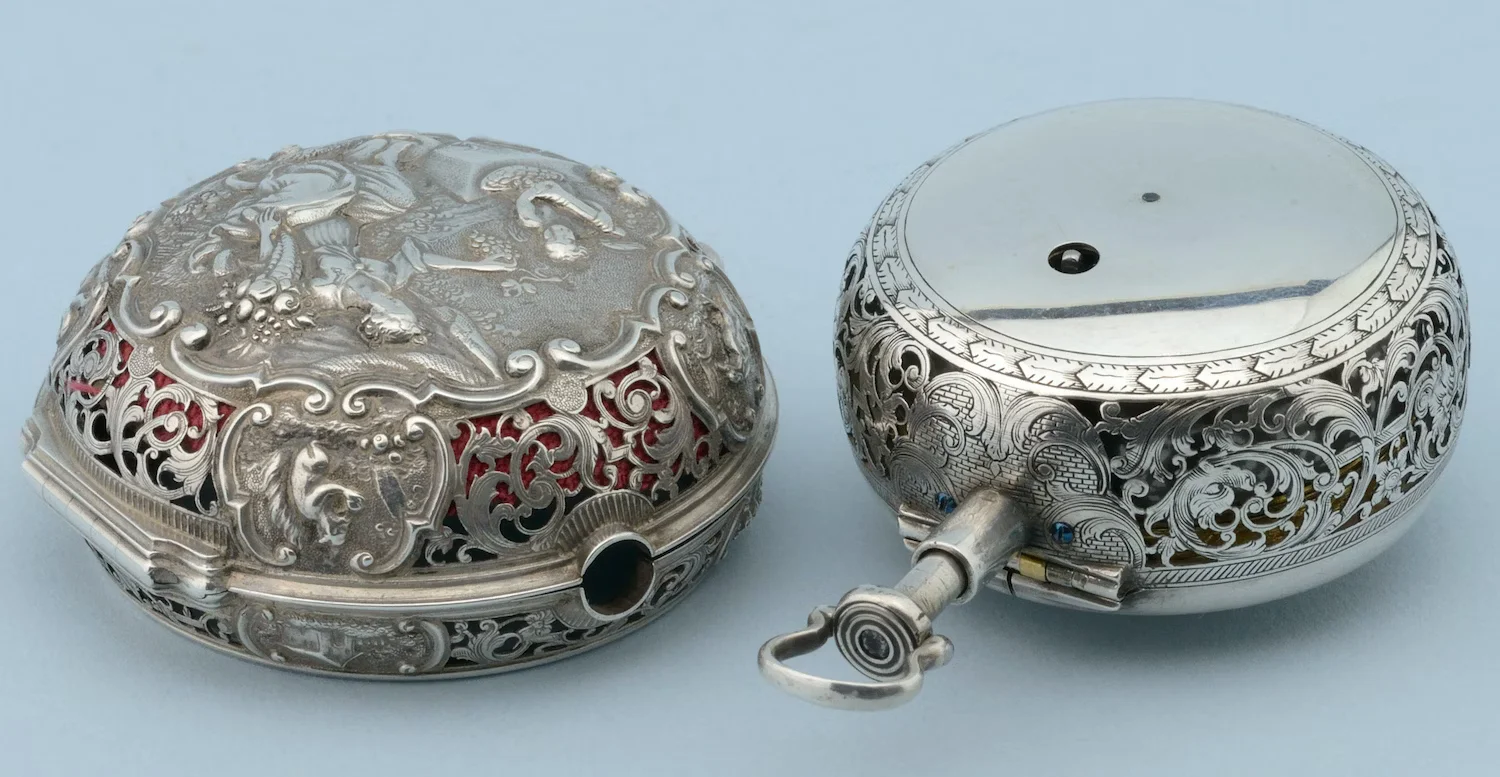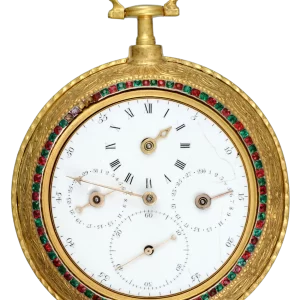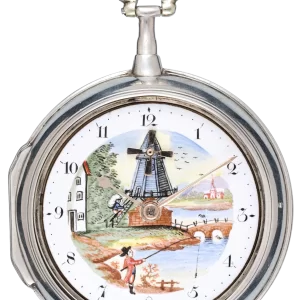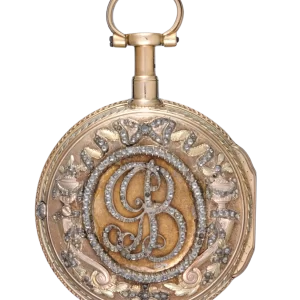MÁY TỰ ĐỘNG LẶP LẠI SỚM - 1710
Signed Poncet London
Circa 1710
Đường kính 56 mm
Độ sâu 18,5 mm
£7,270.00
AUTOMATON REPEATER SỚM - 1710 là một ví dụ phi thường và cực kỳ hiếm của nghệ thuật chế tác đồng hồ ở Anh đầu thế kỷ 18, thể hiện đỉnh cao của tay nghề thủ công và sự đổi mới của thời đại đó. Chiếc đồng hồ viền lặp lại trong quý này, có chữ ký của thợ đồng hồ nổi tiếng người Đức Jean François Poncet, người từng phục vụ công tước xứ Saxony và vua Ba Lan, trưng bày một mặt số tự động với tác phẩm champlevé tinh xảo, mô tả con rồng đang đánh chuông ở trung tâm đồng hồ. Bộ chuyển động mạ vàng toàn tấm, được trang trí bằng các trụ lan can xoay cùng cơ cấu dây chuyền và cầu chì tinh vi, nhấn mạnh kỹ thuật phức tạp đằng sau chiếc đồng hồ này. Đồng hồ có vòi có cánh với mặt nạ, chân được đục lỗ và khắc, cân bằng thép trơn, và đĩa điều chỉnh màu bạc, tất cả đều góp phần tạo nên độ chính xác và tính thẩm mỹ vượt trội của nó. Được kích hoạt bằng mặt dây chuyền đẩy,bộ lặp chuông quý trên một chuông đặt trong hộp, tăng thêm chiều kích thính giác cho vẻ đẹp lộng lẫy về thị giác của nó. Vỏ bên trong bằng bạc được đục lỗ và chạm khắc phức tạp với hình lá rồng và chim, trong khi vỏ bên ngoài được trang trí bằng hình Pomona, nữ thần La Mã của sự dồi dào, cùng với đồ hình có hình rồng, cá, chim săn mồi và một con sóc. Với đường kính 56 mm và chiều sâu 18,5 mm, chiếc đồng hồ này không chỉ có trước nhiều chiếc đồng hồ lặp lại 1/4 máy tự động ở lục địa gần một thế kỷ mà còn là minh chứng cho sự khéo léo và tính nghệ thuật của thời đại nó.
Đây là chiếc đồng hồ lặp lại một phần tư ở Anh đầu thế kỷ 18 rất hiếm và độc đáo. Mặt số được thực hiện tự động với công nghệ champleve và có thiết kế phức tạp hình rồng đánh chuông ở trung tâm. Bộ máy mạ vàng cháy toàn tấm tự hào có các trụ lan can quay, cầu chì và dây xích với thiết lập trục vít và trục bánh xe. Vòi có cánh với mặt nạ, chân được đục lỗ và khắc, cùng với đĩa cân bằng thép trơn và đĩa điều chỉnh màu bạc, đã hoàn thiện chiếc đồng hồ tinh tế này. Đồng hồ được kích hoạt bằng một mặt dây chuyền quý lặp lại trên một chiếc chuông bên trong vỏ. Vỏ bên trong bằng bạc được đục lỗ và khắc hình rồng và chim trên lá, trong khi vỏ bên ngoài có hình rượt đuổi và khắc cảnh Pomona, nữ thần thịnh vượng của La Mã. Các phần điêu khắc chứa đồ hình có hình rồng, cá, chim săn mồi và sóc. Chiếc đồng hồ này được ký bởi Jean François Poncet, một thợ làm đồng hồ nổi tiếng người Đức cho công tước xứ Sachsen và vua Ba Lan. Chiếc đồng hồ này thực sự là một tác phẩm đặc biệt và có trước nhiều mẫu đồng hồ tự động được tìm thấy trên các bộ lặp lục địa gần một thế kỷ. Kiệt tác này có đường kính 56 mm và độ sâu 18,5 mm.
Signed Poncet London
Circa 1710
Đường kính 56 mm
Độ sâu 18,5 mm

